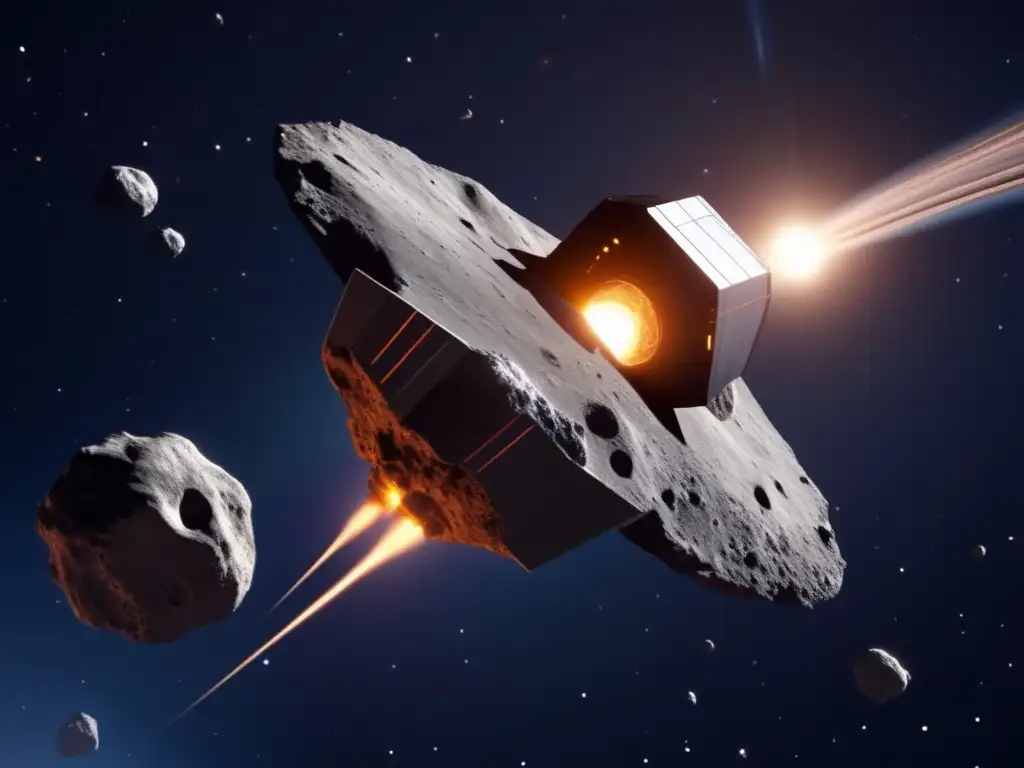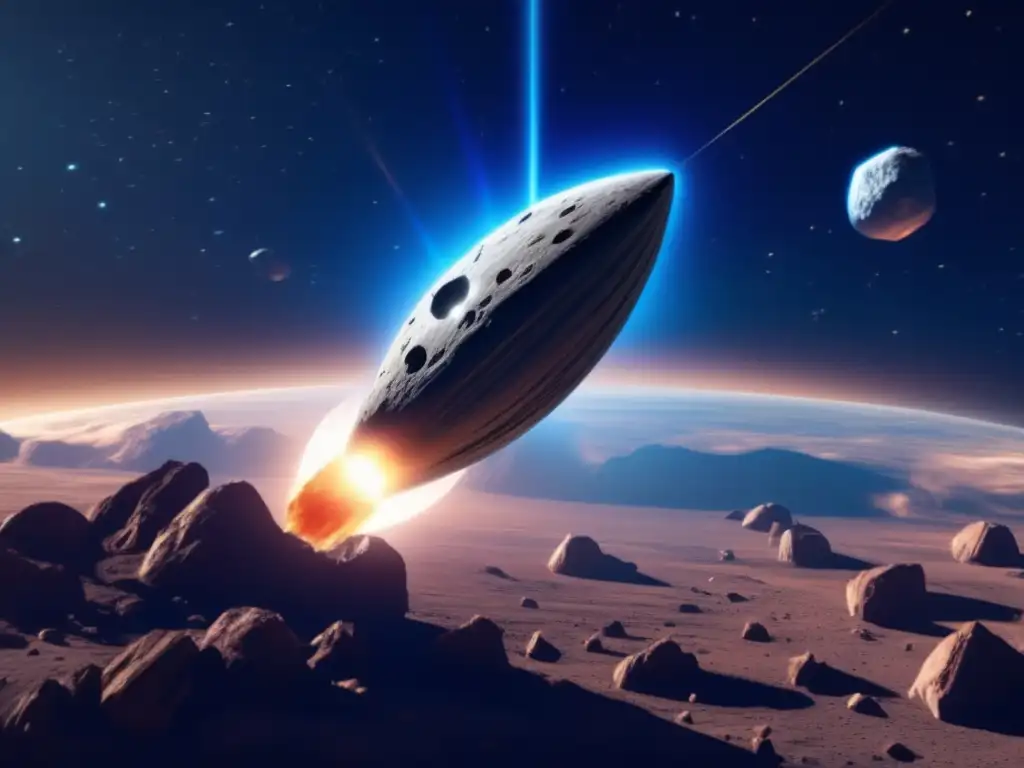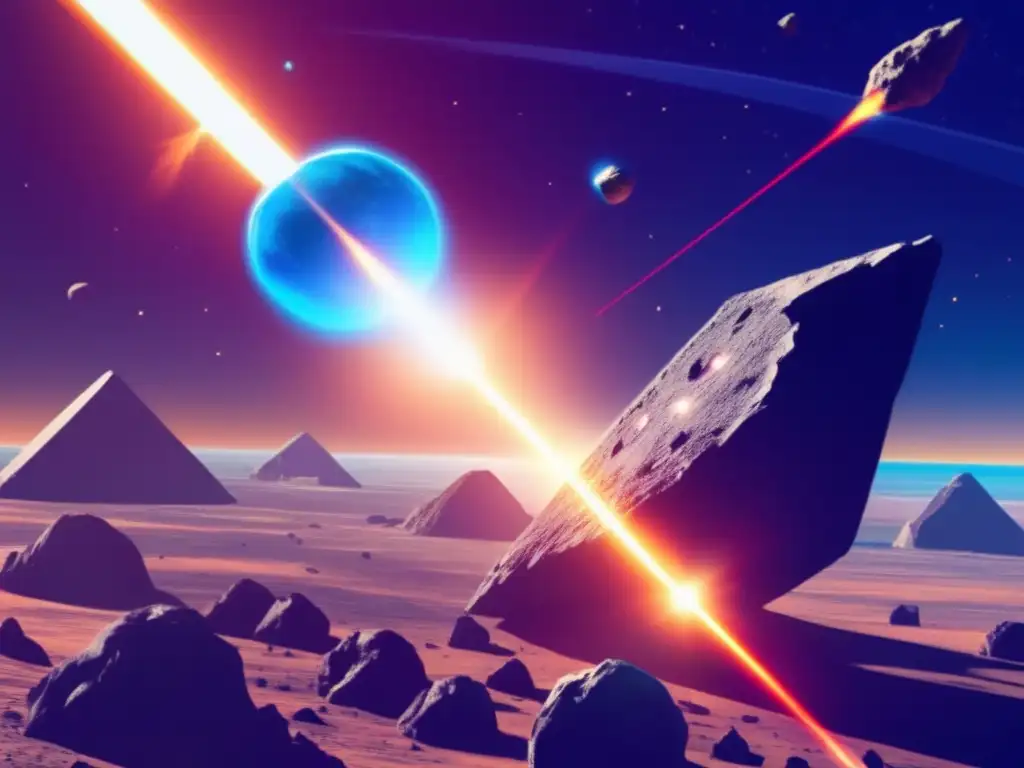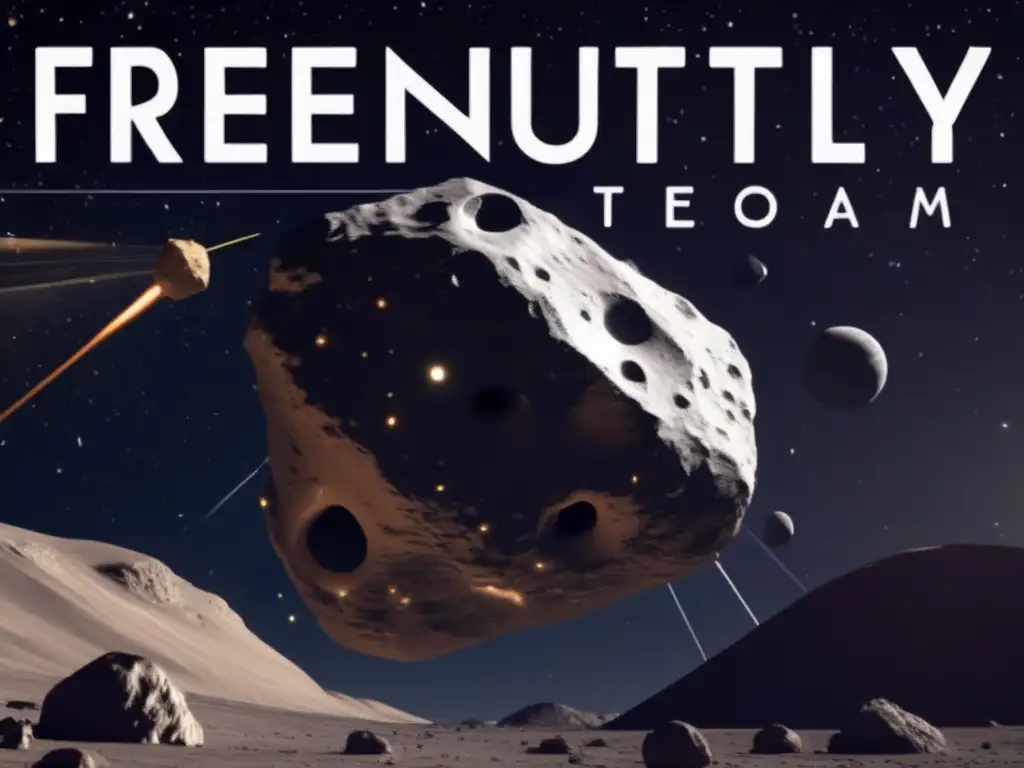Deflecting Disaster: Techniques In Asteroid Defense

Introduction
Asteroids and other Near-Earth Objects (NEOs) pose a significant threat to our planet's safety. In recent years, there has been a growing interest in methods to defend ourselves against these threats. This article will explore the various techniques used to deflect asteroids and protect the Earth from potential disaster.
Nuclear Explosions

Unsuitable Approach
The use of nuclear explosions to deflect asteroids has been suggested in the past, but it is not a suitable approach. Blowing up an asteroid with a nuclear bomb could potentially cause more harm than good. The explosion could break the asteroid into smaller pieces, causing those fragments to spread over a wider area, increasing the risk of impact on Earth.
Alternative Method
However, a nuclear explosion could be used as a last resort if the asteroid is too large to deflect using other methods. By detonating a nuclear bomb near the asteroid, the blast could provide enough force to alter its trajectory, causing it to miss Earth.
Kinetic Impactors

Description
Kinetic impactors are spacecraft designed to collide with an asteroid to alter its trajectory. The spacecraft could be equipped with solid or liquid propellants, depending on the mission's requirements, and must have a robust structure that can withstand the high-speed impact.
NEAR Mission
In 2005, NASA's Near Earth Asteroid Rendezvous (NEAR) mission successfully used a kinetic impactor to alter the course of asteroid Eros. The spacecraft collided with the asteroid at a speed of 5.4 kilometers per second, providing enough force to change its trajectory by several meters per second.
AIDA Mission
The Asteroid Impact and Deflection Assessment (AIDA) mission is set to launch in the mid-2020s to test the effectiveness of kinetic impactors. The mission will attempt to deflect the orbit of the small moonlet of asteroid Didymos using two spacecraft: the European Space Agency's Hera spacecraft, which will observe the impact from a safe distance, and NASA's Double Asteroid Redirection Test (DART), which will collide with the moonlet to alter its trajectory.
Gravity Tractor

Description
The gravity tractor method involves a spacecraft hovering near an asteroid for an extended period. The spacecraft's gravitational pull would slowly pull the asteroid out of its original trajectory.
Advantages
This method is advantageous for asteroids that are too large for kinetic impactors and too fragile for nuclear explosions. It is also a more controlled approach; there is no chance of breaking the asteroid into smaller pieces, which could increase the risk of impact.
NASA Project
NASA's Gravity Recovery and Interior Laboratory (GRAIL) project successfully used a gravity tractor to alter the orbit of its twin spacecraft. The spacecraft monitored each other's gravity fields while hovering in formation, allowing them to make subtle changes to their orbits.
Laser Ablation

Description
Laser ablation involves firing lasers at an asteroid's surface to create a plume of gas. The gas then provides thrust, which alters the asteroid's trajectory.
Advantages
This method is advantageous because it can be used from a distance, reducing the risk for the spacecraft. It is also suitable for asteroids that are too small for kinetic impactors.
NASA Project
NASA's Double Asteroid Redirect Test-Europe/AIDA (DART-E/A) mission will test laser ablation in addition to the kinetic impactor method. The spacecraft will fire a laser at the smaller moonlet of Didymos to assess its effectiveness.
Frequently Asked Questions

-
Can we destroy an asteroid using a nuclear bomb?
Blowing up an asteroid with a nuclear bomb is not a suitable approach. There is a high risk of breaking the asteroid into smaller fragments, which could increase the risk of impact.
-
What is the gravity tractor method?
The gravity tractor method involves a spacecraft hovering near an asteroid for an extended period and using the spacecraft's gravitational pull to alter the asteroid's trajectory.
-
Is laser ablation more effective than kinetic impactors?
Laser ablation is effective for small asteroids, while kinetic impactors are better suited for larger asteroids. Each method has different advantages and disadvantages and should be considered on a case-by-case basis.
-
When will the AIDA mission launch?
The AIDA mission is set to launch in the mid-2020s.
-
Are asteroids a significant threat to Earth?
Yes, asteroids and other NEOs pose a significant risk to our planet's safety.
Conclusion
Defending ourselves against potential asteroid impacts requires careful planning and consideration of all options available. Currently, the most promising methods are kinetic impactors, gravity tractors, and laser ablation. The AIDA mission will be an important test of the effectiveness of these methods. Continued research and development in asteroid defense technology are critical in protecting our planet from potential disaster.
Thank you for taking the time to learn about the techniques in asteroid defense. Please share your thoughts in the comments section, and feel free to participate in www.asteroidrealm.com by subscribing or sharing the article on social networks.
Additional Resources

For those interested in delving deeper into the topic of asteroid defense, additional resources include:
- NASA Planetary Defense Coordination Office: https://www.nasa.gov/planetarydefense
- Asteroid Impact and Deflection Assessment (AIDA) Mission: https://www.esa.int/Safety_Security/Hera/Asteroid_Impact_Deflection_Assessment_AIDA
- The B612 Foundation: https://b612foundation.org/
 The Skyward Shield: Strategies For Asteroid Defense
The Skyward Shield: Strategies For Asteroid Defense Avoiding The Big Impact: Current Measures In Asteroid Defense
Avoiding The Big Impact: Current Measures In Asteroid Defense Bracing For Impact: The Future Of Planetary Defense
Bracing For Impact: The Future Of Planetary DefenseIf you want to discover more articles similar to Deflecting Disaster: Techniques In Asteroid Defense, you can visit the Planetary Defense category.
Leave a Reply

Articulos relacionados: